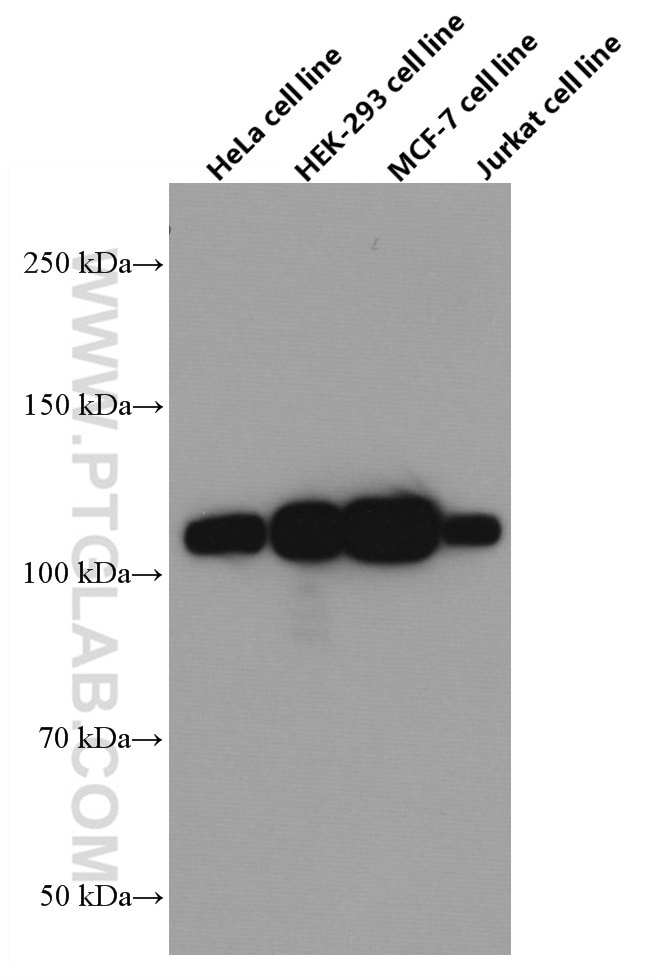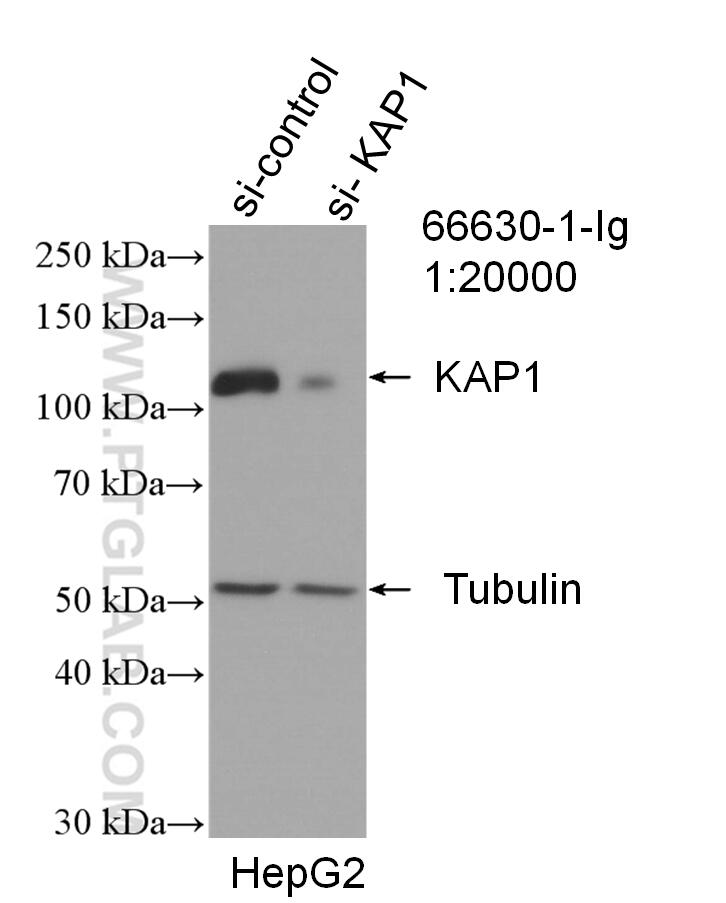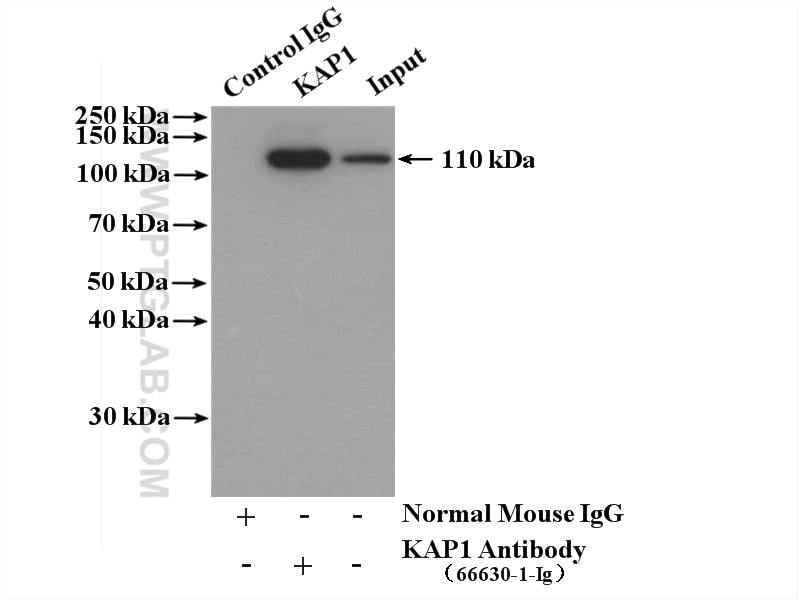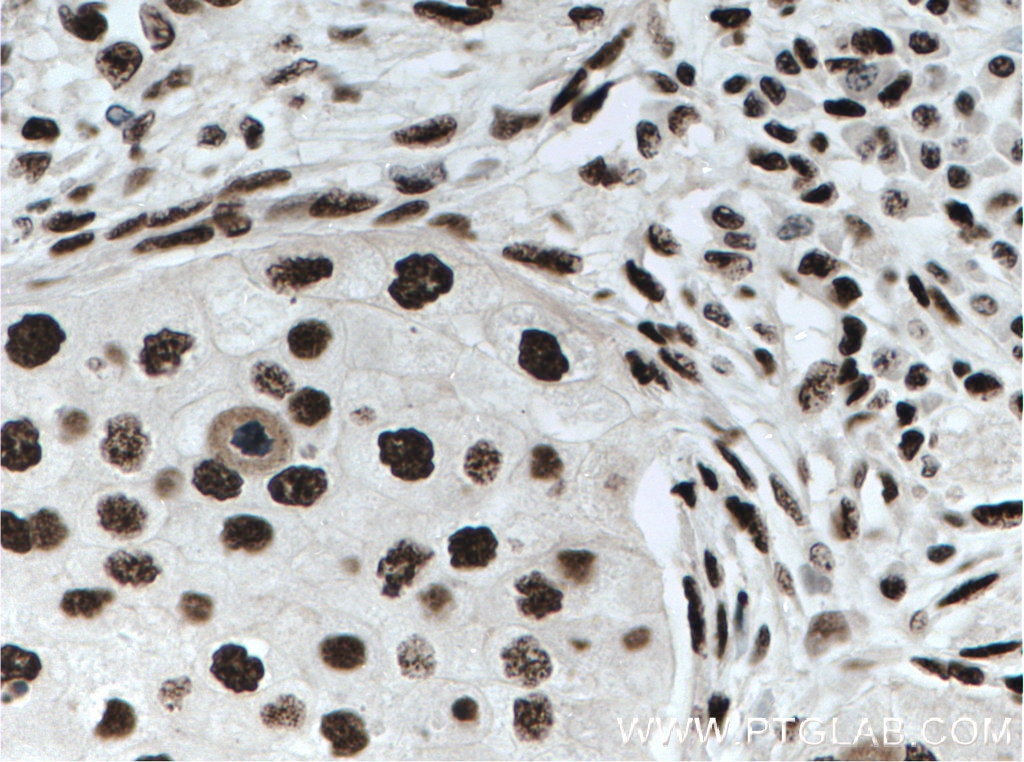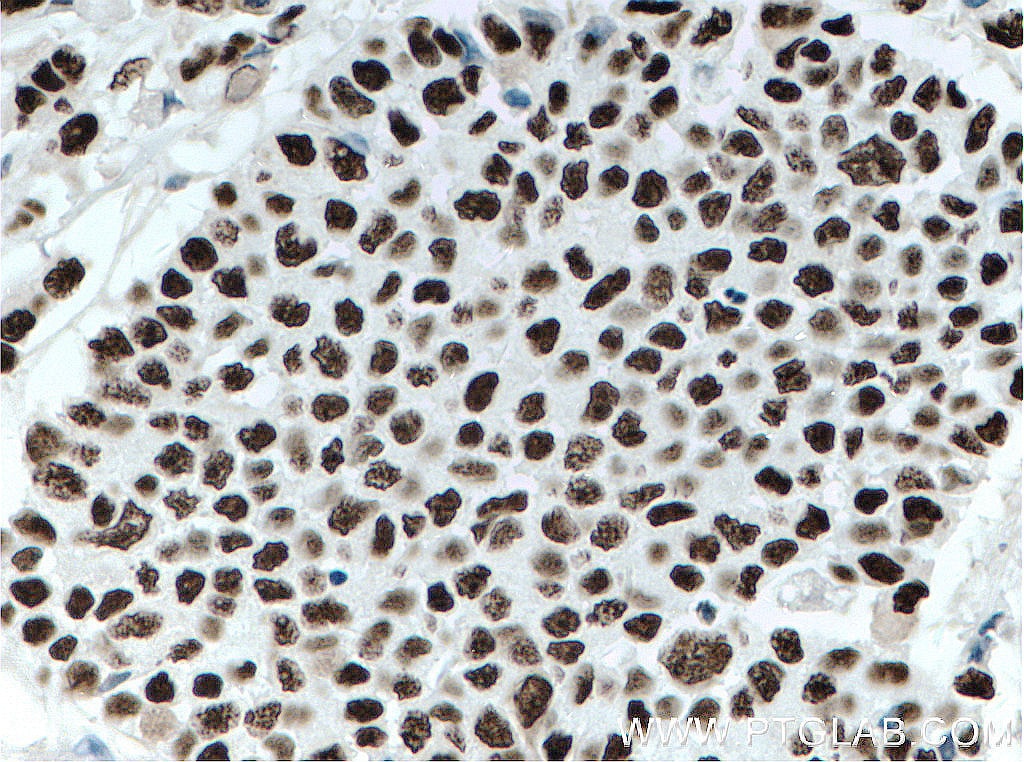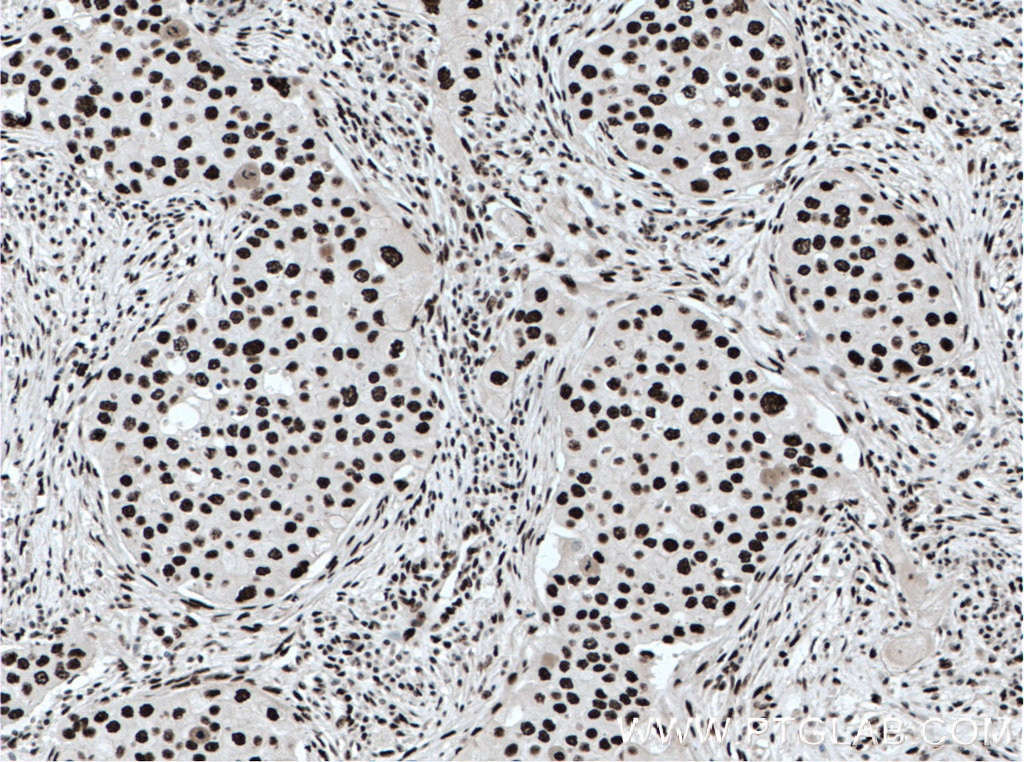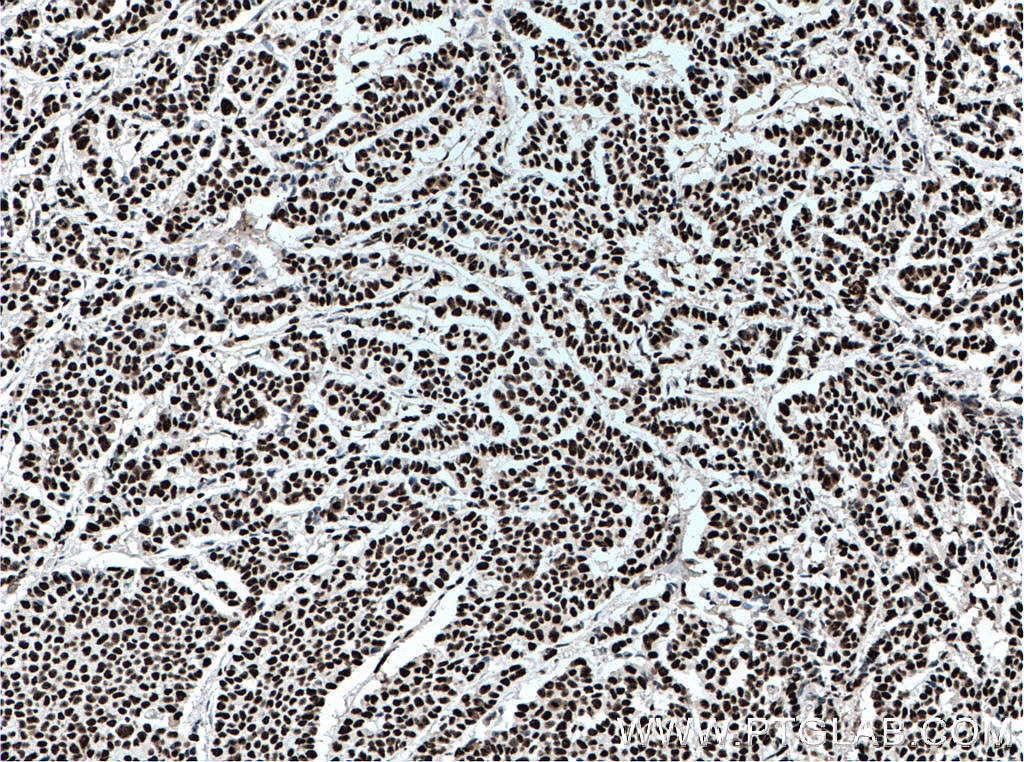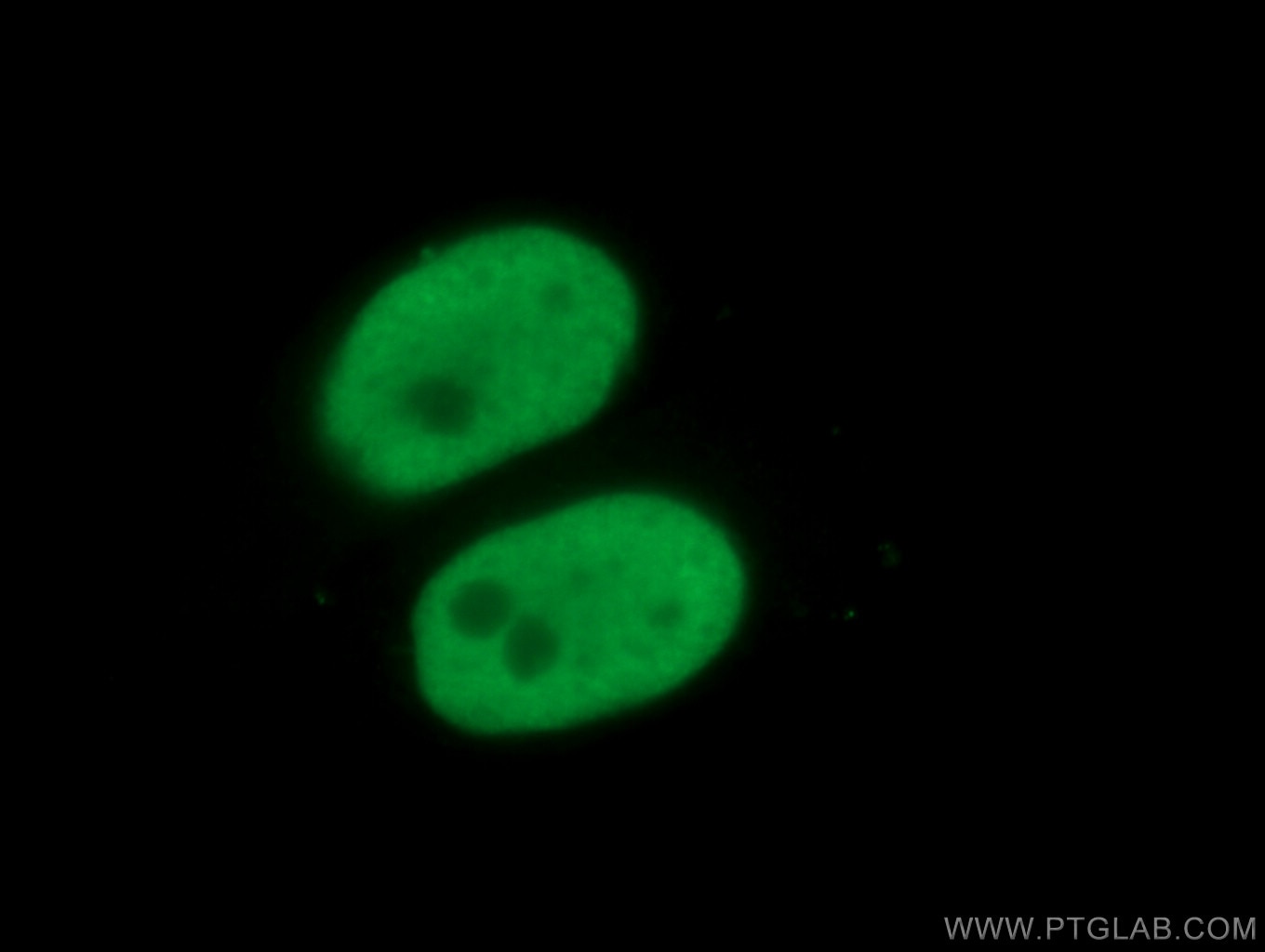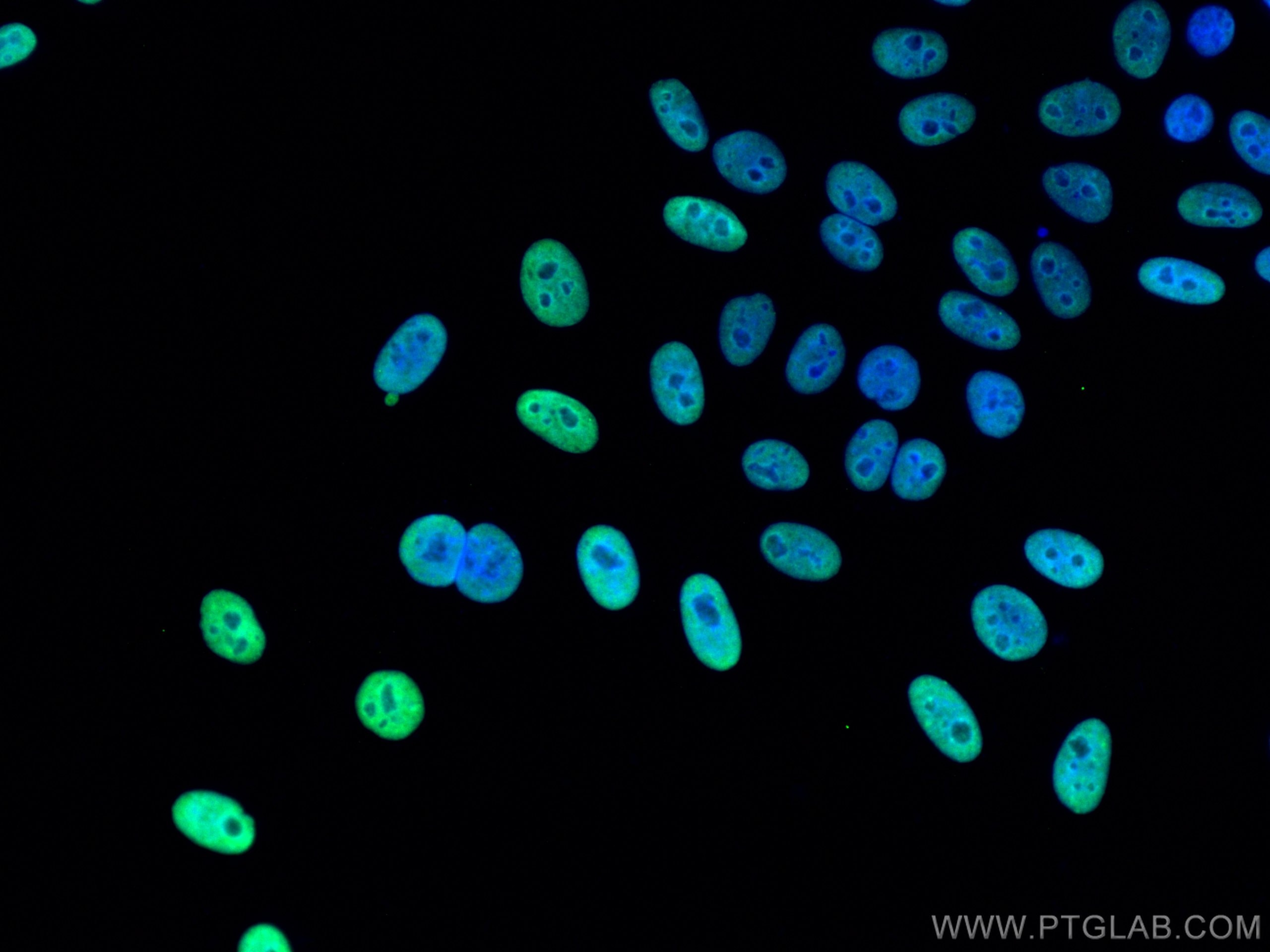- Featured Product
- KD/KO Validated
KAP1 Monoklonaler Antikörper
KAP1 Monoklonal Antikörper für IF, IHC, IP, WB, ELISA
Wirt / Isotyp
Maus / IgG2a
Getestete Reaktivität
human und mehr (1)
Anwendung
WB, IP, IHC, IF, ChIP, ELISA
Konjugation
Unkonjugiert
CloneNo.
1B9G12
Kat-Nr. : 66630-1-Ig
Synonyme
Galerie der Validierungsdaten
Geprüfte Anwendungen
| Erfolgreiche Detektion in WB | HeLa-Zellen, HepG2-Zellen |
| Erfolgreiche IP | HeLa-Zellen |
| Erfolgreiche Detektion in IHC | humanes Mammakarzinomgewebe, humanes Kolonkarzinomgewebe Hinweis: Antigendemaskierung mit TE-Puffer pH 9,0 empfohlen. (*) Wahlweise kann die Antigendemaskierung auch mit Citratpuffer pH 6,0 erfolgen. |
| Erfolgreiche Detektion in IF | HepG2-Zellen |
Empfohlene Verdünnung
| Anwendung | Verdünnung |
|---|---|
| Western Blot (WB) | WB : 1:20000-1:100000 |
| Immunpräzipitation (IP) | IP : 0.5-4.0 ug for 1.0-3.0 mg of total protein lysate |
| Immunhistochemie (IHC) | IHC : 1:200-1:800 |
| Immunfluoreszenz (IF) | IF : 1:50-1:500 |
| It is recommended that this reagent should be titrated in each testing system to obtain optimal results. | |
| Sample-dependent, check data in validation data gallery | |
Veröffentlichte Anwendungen
| KD/KO | See 1 publications below |
| WB | See 8 publications below |
| IF | See 1 publications below |
| ChIP | See 1 publications below |
Produktinformation
66630-1-Ig bindet in WB, IP, IHC, IF, ChIP, ELISA KAP1 und zeigt Reaktivität mit human
| Getestete Reaktivität | human |
| In Publikationen genannte Reaktivität | human, Maus |
| Wirt / Isotyp | Maus / IgG2a |
| Klonalität | Monoklonal |
| Typ | Antikörper |
| Immunogen | KAP1 fusion protein Ag7519 |
| Vollständiger Name | tripartite motif-containing 28 |
| Berechnetes Molekulargewicht | 89 kDa |
| Beobachtetes Molekulargewicht | 100 kDa |
| GenBank-Zugangsnummer | BC004978 |
| Gene symbol | TRIM28 |
| Gene ID (NCBI) | 10155 |
| Konjugation | Unkonjugiert |
| Form | Liquid |
| Reinigungsmethode | Protein-A-Reinigung |
| Lagerungspuffer | PBS mit 0.02% Natriumazid und 50% Glycerin pH 7.3. |
| Lagerungsbedingungen | Bei -20°C lagern. Nach dem Versand ein Jahr lang stabil Aliquotieren ist bei -20oC Lagerung nicht notwendig. 20ul Größen enthalten 0,1% BSA. |
Hintergrundinformationen
KAP1, also named as TRIM28 or RNF96, is a 835 amino acid protein, which contain one RING-type zinc finger, one PHD-type zinc finger, one bromo domain and two B box-type zinc fingers. KAP1 localizes in the nucleus and Belongs to the TRIM/RBCC family. KAP1 is a nuclear corepressor for KRAB domain-containing zinc finger proteins and mediates gene silencing by recruiting CHD3, a subunit of the nucleosome remodeling and deacetylation (NuRD) complex, and SETDB1 to the promoter regions of KRAB target genes. KAP1 is expressed in all tissues tested including spleen, thymus, prostate, testis, ovary, small intestine, colon and peripheral blood leukocytes. The calcualted molecular weight of KAP1 is 89 kDa, but modified KAP1 is about 100 kDa. (PMID: 18590578 )
Protokolle
| Produktspezifische Protokolle | |
|---|---|
| WB protocol for KAP1 antibody 66630-1-Ig | Protokoll herunterladen |
| IHC protocol for KAP1 antibody 66630-1-Ig | Protokoll herunterladen |
| IF protocol for KAP1 antibody 66630-1-Ig | Protokoll herunterladen |
| IP protocol for KAP1 antibody 66630-1-Ig | Protokoll herunterladen |
| Standard-Protokolle | |
|---|---|
| Klicken Sie hier, um unsere Standardprotokolle anzuzeigen |
Publikationen
| Species | Application | Title |
|---|---|---|
Sci Adv Epac1 activation by cAMP regulates cellular SUMOylation and promotes the formation of biomolecular condensates. | ||
Nucleic Acids Res SIRT6 coordinates with CHD4 to promote chromatin relaxation and DNA repair. | ||
BMC Pulm Med miR-125b-5p upregulation by TRIM28 induces cisplatin resistance in non-small cell lung cancer through CREB1 inhibition
| ||
Oncogene ZNF133 is a potent suppressor in breast carcinogenesis through dampening L1CAM, a driver for tumor progression |
